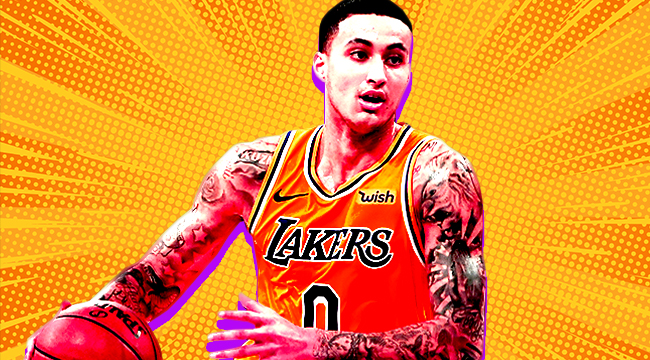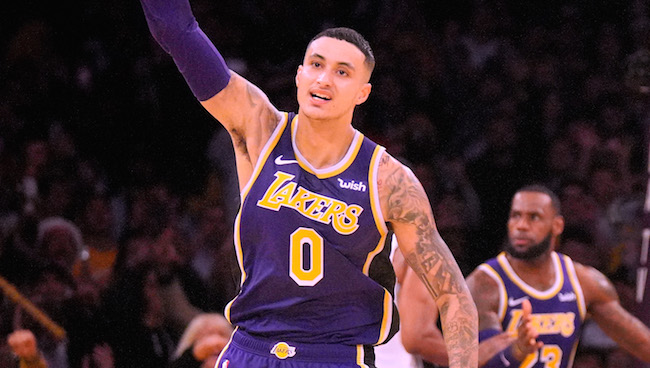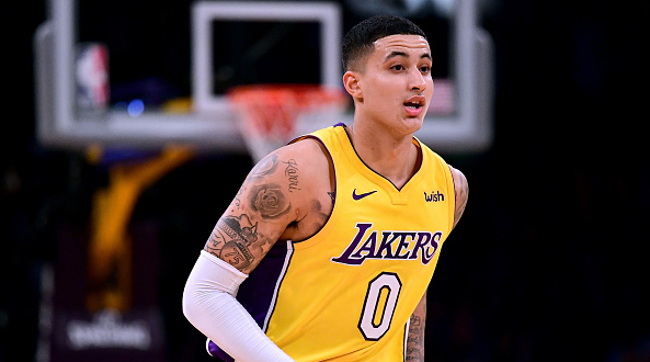
Every team in the NBA is smarter than it was ten years ago, which has brought drastic changes in style of play and how players are valued throughout the league. The league-wide move toward analytics has simply transformed everything we once thought we knew about basketball. This movement is particularly obvious when looking at the league-wide makeup of shots – in 2009, the average team took 39.2 percent of their shots from beyond the three-point line; in 2019, that number is 65.8 percent and should only climb as more players at all positions are coming into the league having learned to bomb from deep.
The increased emphasis of the three-point shot has revolutionized basketball, revamping the game from one where the best teams were built around the best big men to one that’s dominated by skill-based players on the perimeter. There are exceptions to the rule, as always, but the math has taken over the NBA to the point that it’s almost an entirely different game than it was a decade ago.
The math doesn’t stop there. While increased usage of the three-point shot is the most obvious change in basketball from the previous era, teams are analyzing the numbers to uncover all sorts of other inefficiencies. In particular, teams are running in transition more than they were previously. In 2009, transition opportunities were roughly 12 percent of a team’s offense; in 2019, the average team spends more than 15 percent of its possessions on transition opportunities. Just like the three-point shot was shown to be more valuable than a mid-range jumper, transition offense greatly outperforms half-court offense.
So how come we haven’t seen a gigantic increase in transition offense like we did with three-point shots? The difference is in the perceived value of those things; there are coaches and analysts who still don’t buy in to the value of the three-pointer over other offensive philosophies, but there are few people in the history of the sport who would argue with you over the value of transition offense, even if they didn’t have the intricate numbers we have today to prove their point. From the beginning of time, coaches have preached the value of getting back on defense and want their teams to “play fast,” though that can sometimes be misconstrued as only being defined by transition opportunities.

Smaller and faster lineups have contributed to teams getting out in transition more often, as has an increase in rebounding from players who are capable of taking the ball from one end to the other and making a good decision with the ball, whether that be scoring themselves or finding an open teammate. Players like Giannis Antetokounmpo, Ben Simmons, LeBron James, and Russell Westbrook are redefining traditional roles across all facets of the game, with their defensive rebounding and transition ferocity following that theme. There are few things in the NBA more terrifying than attempting to stop one of these guys at full speed. Other forwards are taking their cue from Antetokounmpo, Simmons, and James, including one of James’ own teammates in Kyle Kuzma, who has taken the mantle as one of the Lakers’ best transition threats with James sidelined with a groin injury.
The statistics in this area boggle the mind. The Lakers get out in transition on more than 20 percent of their possessions when Kuzma is on the floor and nearly twice as often after a defensive rebound.
Volume is more important than overall efficiency in transition, as even a bad transition offense is miles better than a good half-court possession; the best half-court offense in the league (Golden State) scores roughly 101.5 points per 100 possessions, while the worst transition offense (Miami) scores nine points better, sporting a 110.5 offensive rating in these spots.
Their offense gets even better when it’s Kuzma himself grabbing the defensive rebound and pushing the ball up the court. According to PBP Stats, the Lakers have had 218 offensive possessions following a Kuzma defensive rebound and have scored 281 points.
That 128.9 offensive rating easily leads the team among their grab-and-go threats — James clocks in at 115.7 and Lonzo Ball generates a similar 115.4 offensive rating after his defensive rebounds. All three of these numbers are fantastic, as the league averages 111.5 points per 100 possessions after a defensive rebound, but Kuzma’s impact on their offense is well above the rest of his teammates in this area.

However, even this dampens the impact of his transition ability, as the 128.9 offensive rating encapsulates all of his defensive rebounds, whether the Lakers push the ball in transition or settle into their half-court offense. Controlling for Kuzma’s defensive boards that lead to a shot, turnover, or foul within eight seconds of him grabbing the rebound, the Lakers have scored 168 points on these 123 possessions for a ludicrous 136.6 offensive rating and an equally ludicrous 86 percent true shooting. When Kuzma grabs a rebound and pushes in transition, the Lakers are nearly unstoppable.
Known primarily for his scoring prowess, Kuzma’s transition ability takes a few different forms. He’s a good finisher in these spots, can find teammates running the floor or flaring out to the three-point line, and, most importantly, makes good decisions with the ball in his hands. He’s improved across the board as a passer in his second year in the NBA and sports about an average turnover rate in transition for a player who uses as many possessions as he does in these spots. A perfectly futuristic mix of strong and agile, Kuzma is able to go through smaller players who drop back to defend in transition while also being quick enough to dodge around bigger opponents.
His passing has also improved in these spots, with a better assist to turnover ratio than last year, though he could still stand to cut down on the turnovers a bit more.
Kuzma’s individual efficiency numbers aren’t altogether special by themselves, but when he’s able to grab-and-go after a defensive rebound, the Lakers as a whole benefit greatly. His combination of size, finishing ability, and improving vision and passing make him a terror in transition, and the extra split-second they save when he corrals the ball himself on the defensive glass (versus having JaVale McGee or Tyson Chandler pass it to him) gives Los Angeles that much more of an advantage over their scrambling opponents.






